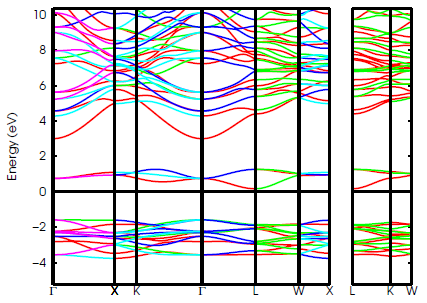A DFT study of optoelectronic, elastic and thermo-electric properties of the double perovskites Rb2SeX6 (X=Br,Cl)
Keywords:
Double perovskite, opto-electronic properties, Elastic propertiies, Seebeck coefficients, Figure of merit, DFTAbstract
Thermo-electric (TE) material applications reduce reliance on traditional energy resources by converting heat to electric energy. We have studied, for the first time, the thermo-electric properties of Rb2SeX6 (X=Br,Cl). Using norm-conserving pseudo potentials in a plane wave basis set of Quantum Espresso code, the optoelectronic, elastic and thermo-electric properties of Rb2SeX6 (X=Br,Cl) have been investigated using density functional theory. Generalized Gradient Approximation of Perdew Burke Ernzerhof (GGA-PBE) and Generalized Gradient Approximation of Perdew Burke Ernzerhof adapted for Solid (GGA-PBESol) exchange correlation functionals were employed in all calculations. The band structure plots suggest that the studied double perovskites have indirect band gaps. Rb2SeBr6 band gap values of 1.7574/ 1.569 eV (using GGA-PBE/PBEsol) are remarkably similar to that of two effective inorganic/organic perovskites FAPbI3 and MAPbI3 . Maximum peaks generated from refractive index results indicate possible solar cell uses of the materials because they are in the visible and ultraviolet ranges. The results of other optical properties such as absorption coefficients, electron energy loss, conductivity, and reflectivity concludes that Rb2SeX6 (X=Br,Cl) have good values for electron generation, high potential for applications in the optoelectronic industry and are semiconductor in nature. The calculated shear anisotropy values of Rb2SeBr6/Cl6 are 3.09/1.71, suggesting that they are isotropic materials. With calculated Poisson’s ratio of 0.32 and 0.26, the materials are predicted to be ductile in nature. The two materials are appropriate for thermo-electric applications since their thermal to electrical conductivity ratio are small (the order of 10-5). The calculated minimum values of Seebeck coefficient values of 0.198×103 / 0.166 ×103 (mV/K) at 750 K, for Rb2SeBr6/Cl6 are positive, indicating that they have p-type conduction. Figure of merit values at all temperature range considered are greater than one (ZT > 1) for both Rb2SeBr6 and Rb2SeCl6, suggesting that they are good thermo-electric materials. The results of the calculations provide the basis for the industrial application of Rb2SeBr6/Cl6 as solar cells.

Published
How to Cite
Issue
Section
Copyright (c) 2023 W. A. Yahya, A. A. Yahaya, A. A. Adewale, A. A. Sholagberu, N. K. Olasunkanmi

This work is licensed under a Creative Commons Attribution 4.0 International License.






